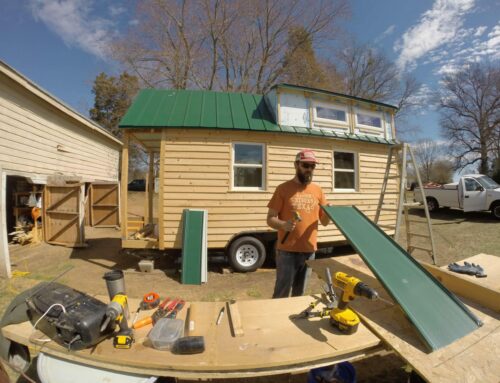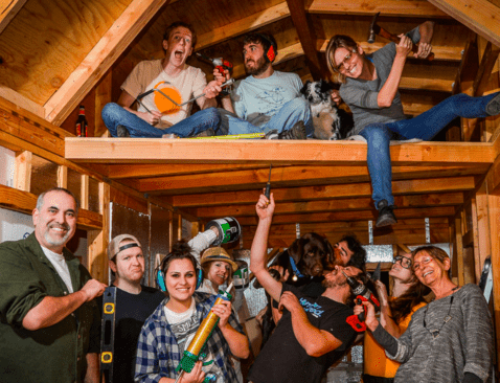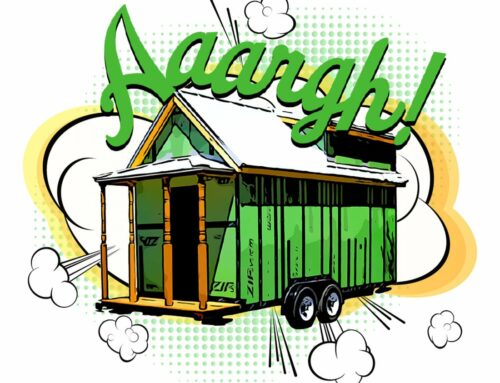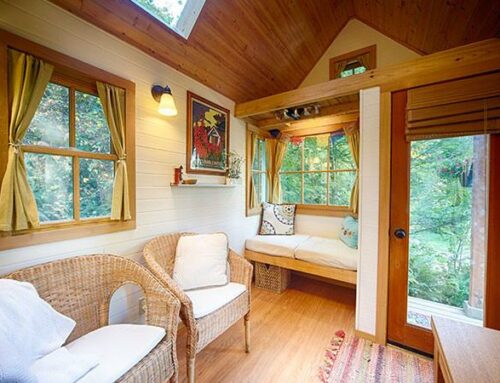If you are looking to heat your tiny home with an off-grid heater, the two big power players are PROPANE and WOOD BURNING.
Let’s compare the most popular off-grid heaters for tiny house RVs: the Dickinson Marine P9000 and the Kimberly Wood Stove.
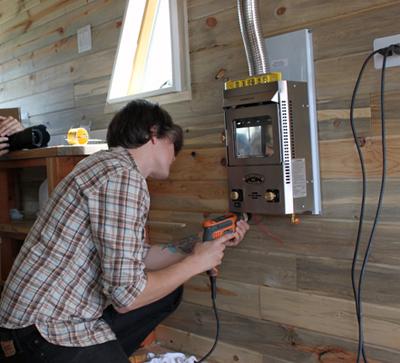
PROPANE: Dickinson Marine P9000
The Dickinson has been the leader in tiny house heating for some time because of its sleek look and compact size.
Christopher Smith from the film TINY installing his Dickinson in his Colorado tiny home. Photo credit here.
Pros
Space Saving. This tiny heater can be installed directly into your wall. The body of the unit is only 8.5″ wide x 14″ high x 5.5″ deep.
Affordable. Off-grid appliances, especially those made for boats, are expensive. The Dickinson P9000 is $1145.15, including the chimney. Cost of fuel is not included.
Beauty. No one can deny that this is a good looking appliance. The glass door allows you to watch the flames flicker as the heater warms your tiny space.
Venting. Can be vented through the wall or ceiling.
Lightweight. Weight is always an important consideration when it comes to tiny house RVs.
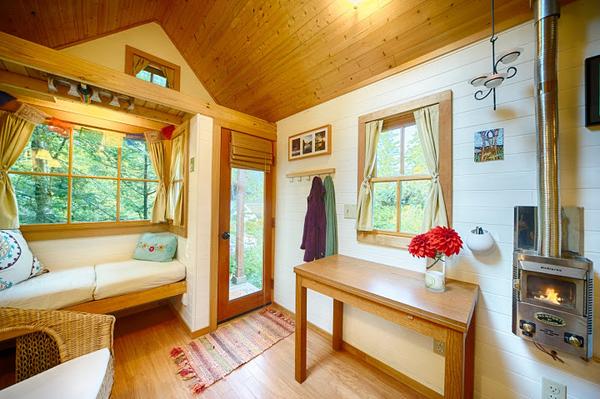
Brittany’s Bayside Bungalow with the Dickinson in her Washington state tiny home. Photo credit: Chris Tack
Cons
Fuel Expense: This stove burns 1 pound of propane every 5-7 hours. A 20 pound propane tank will cost about $15-20 to refill. Depending on your climate, this can be a huge expense.
Running Constantly Not Possible: This stove needs to be used under supervision. Which means turning it off while you sleep or when you leave the house may cause your home to return to a frigid temperature, depending on your choice of insulation.
Fan Requires 12v: Wiring needed for the fan to spin and heat to circulate.
Lower BTUs: Depending on where you are located, this heater may not be enough. On HIGH the heat output is 4,500 BTUs.
Doesn’t Dehumidify: Propane stove tops produce excessive moisture, which can be difficult to maintain in a tiny space. If you already have a propane stove planned for your tiny home RV, you might want to purchase a dehumidifier or use a heat source that acts as a dehumidifier. Wood stoves will dehumidify as well as heat, where as the Dickinson will not act as a dehumidifier. *As a note, the Dickinson will not produce extra moisture because it is a vented appliance.

WOOD STOVE: Kimberly by Unforgettable Fire, LLC.
The Kimberly is compact, burns extremely clean for a wood burning stove and vents through the floor, making it the most popular choice for tiny home owners who prefer wood burning heat.
Pros
Dehumidifier: Wood burning stoves act as dehumidifiers, which is a good thing for tiny spaces that often struggle with moisture control.
Fuel Cost: Wood is easily obtainable and if you have your own wooded property, it can be free. Also check Craigslist for “free firewood.”
High BTUs: This wood stove can burn up to 42,200 BTUs. On low, this stove can burn up to 8 hours on a single load of fuel, providing a good night’s sleep without having to refuel.
Beauty: Like the Dickinson, this stove is also very attractive and provides a glass window for fire viewing.
Cook top: As an added bonus, you can cook on top of this stove.
No additional power needed. This stove is operational without the need for 12V.
Cons
Space Requirement: Although the Kimberly takes up far less space than most wood stoves and allows the use of a 3-inch pellet stove pipe, it will still require more space and clearance than the Dickinson and cannot be installed into the wall.
Cost: At $4,495 for the stove, pipe and floor pad, the Kimberly is an investment.
Too Much Heat: Depending on your location and climate, this stove might be too much for your tiny space, even when on low.
Weight: The Kimberly weighs 56 pounds, which isn’t very heavy for a wood stove but heavier than the Dickinson.
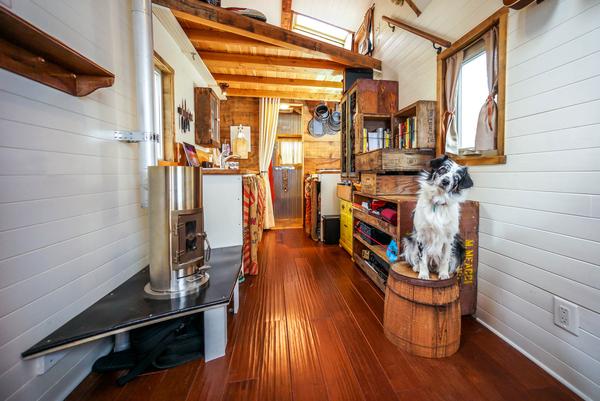
Jenna & Guillaume‘s Kimberly wood stove in their traveling tiny home
For our tiny home, we went back and forth between the Dickinson and the Kimberly. Eventually we decided on the Kimberly. We plan on taking our tiny home to ski resorts, so an efficient high BTU heat source was necessary. We also have a three burner propane cooktop, so moisture control was a factor in our wood stove decision. The extra money and space requirement was worth it to us.
*Other ways to heat your tiny home such as Electric Heat



